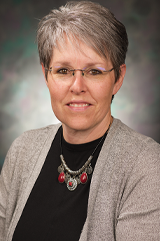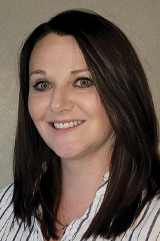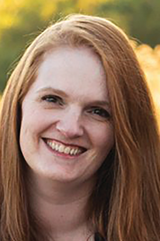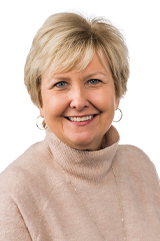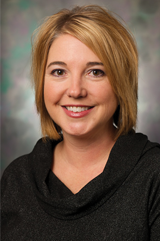SSOM Program Coordinators: The Heart of Student Learning
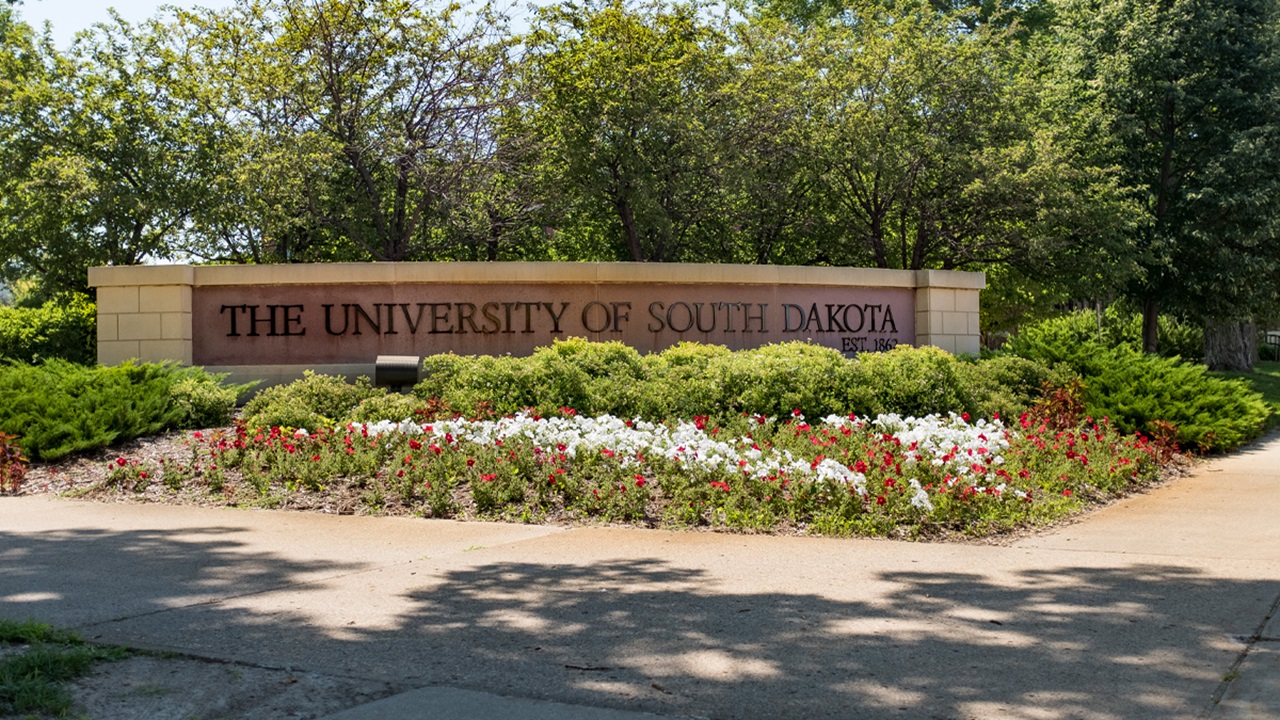
Janet Fulk, assistant director, FARM Program
How long have you been in this role with the USD SSOM? Almost five years. Prior to that I was with the USD School of Health Sciences for 13 1/2 years.
Primary duties: My primary duties are supporting the students located in our rural FARM (Frontier And Rural Medicine ) program across South Dakota, along with working with and supporting the physicians and administrators at each FARM site to ensure our students have a true rural medical and community immersion experience. In addition, I work to recruit students from our first-year class each year. I follow our FARM alumni as they journey through residency and into practice and keep them involved in the FARM program by utilizing them as teachers, mentors and recruiters for the program.
What does a typical workday look like? A typical day is spent interacting with students, faculty and other administration and staff to ensure a quality experience for students.
What about your job is most fulfilling? The most rewarding part of my job is getting to know the FARM students, watching them grow as clinicians and building lifelong relationships with them. I often get to know their families and get pictures of their children before and after graduation. In addition, I am blessed to have wonderful students, committed to the program far beyond graduation, who love to share stories about their time in the program and how it has impacted them in residency and practice.
What is challenging? Just learning all the ins and outs of the ever-evolving world of medical education is a challenge. Every day I learn something new, and with our students being geographically disbursed over the whole of South Dakota, finding ways to support them where they are at in their community can present a challenge. The advantage of our small numbers is that the relationship between myself and our students is more intimate, which means they know that I am available to them anytime they need via text, phone call or email. Dr. Anderson refers to me as the “Mama Hen” of the FARM program.
Brittany Grant, program coordinator, Rapid City Campus
How long have you been with the SSOM? 4 years.
How long have you been in this role? Since February of 2022.
Primary duties: I coordinate Pillar 2 and 3 activities and clinical experiences, monitoring that the students are completing their requirements in order to graduate. What does a typical workday look like? This depends on the time of year and the activities going on. One day I could be working on Pillar 2 schedules, monitoring students’ progress, the next I’m in meetings all day, whether administrative or with students. On Fridays we have faculty on campus giving lectures or facilitating small group or journal clubs. It is variable.
What about your job is most fulfilling? Watching the Pillar 2 students come in, never working in a clinical setting and persevering through Pillar 2 and 3 stressors to match into a residency program they are excited about and graduate with their M.D. degree. There are so many ups and downs through this process, and I am honored to be a part of it, helping them navigate not only the administrative part but the personal part of it as well.
What is challenging? The most challenging aspect for me is to create the Pillar 2 clinical schedule. Since we have an LIC curriculum, it’s also challenging to coordinate the schedules of around 60 physicians and up to 15 students.
Eleanor Turner, education coordinator, Sioux Falls Campus
How long have you been at SSOM? About 18 months.
How long have you been in this role? Just over a year.
Primary duties: I assist Pillar 2 and 3 students on the Sioux Falls campus with anything and everything they need! With the help of two education assistants, I create class schedules, ensure students are meeting their requirements, organize badges and hospital access, provide logistical and emotional student support, and problem solve about a thousand little things a day.
What does a typical workday look like? Every day is different, but usually it’s a combination of responding to student and staff email inquiries, tracking student requirements, working on ongoing projects such as preparing for next year’s class cohort, meeting with students and drinking far too much Diet Coke.
What about your job is most fulfilling? I love student interaction. Getting to know all these talented, smart individuals and helping them to reach their educational goals is truly the best part of this job. I also love my team, our wonderful Sioux Falls campus dean and two incredible education assistants. They all make coming to work really enjoyable.
What is challenging? A challenge that I enjoy is creating the new class schedule each year. It’s like a giant jigsaw puzzle or logic problem, and I have to be able to think about 20 steps ahead all the time. I’d love to develop some software that could automate some of the process, but there are so many complicated components to it that it will take a bigger brain than mine to figure out how to program everything.
Cathy Logue, education coordinator, Vermillion Campus
How long have you been at SSOM? 32 years. I started on Dec. 29, 1989. I graduated from USD nursing school in 1979 and worked at the Viborg Hospital for 10 years prior to starting this position. I am eternally grateful to Dr. Bruce Vogt for hiring me!
How long have you been in this role? 32 years. The role has definitely evolved through the years.
Primary duties: Serving as the education coordinator for the Pillar 1 Clinical Foundations Courses 1, 2 and 3. In addition, I am the coordinator for Student Support Services under the Office of Student Affairs.
What does a typical workday look like? I am not sure I have a typical workday, which is what I love about my job; each day is a little different, so I never get bored. I spend most of the time on the Vermillion campus but am also on the Sioux Falls campus about one day a week. The format of each of the Clinical Foundations courses is largely small group, hands-on activities focused on teaching physical exam skills, medical history taking, clinical reasoning, note writing and other labs such as Point of Care Ultrasound and I assist in coordinating these activities.
What about your job is most fulfilling? Serving students by striving to provide high quality educational experiences. I receive special satisfaction from scheduling one-on-one clinical experiences for the Pillar 1 students with physicians and specialties of their choice. It makes me extremely happy when I hear from our Pillar 1 students about a clinical experience that was very meaningful to them. I am blessed to work with an incredible team of people; especially Arica Schuknecht and Dr. Roy Mortinsen. The Parry Center staff are also crucial members of our team and have elevated the delivery of the Clinical Foundations learning experiences. In addition, as the coordinator for Student Support Services, it warms my heart to see all the additional resources that are now available to the students, like the two new counseling positions for mental health needs, a chief well-being officer and a medical education learning specialist.
What is challenging? It can be difficult to find and recruit enough clinical faculty members to fill our many teaching positions. If any SSOM alumni who read this are interested, please contact me!
Sue Bak, education coordinator, Yankton Campus
How long have you been in this role with the USD SSOM? 13.5 years.
Primary duties: As education coordinator, I am responsible for the planning, development and organization of the daily educational experiences and support activities of the medical students during their third and fourth years of clinical education on the Yankton campus.
What does a typical workday look like? There never seems to be a typical day as each day seems to bring new tasks and encounters. I start my day with messages and emails and tackle whatever challenges are present there. I am constantly working ahead to complete requested lectures, schedules, find facilitators for small groups, preparation for upcoming sessions and presentations, ensuring students are compliant with vaccines and other requirements, as well as a multitude of other items.
What about your job is most fulfilling? I find it very gratifying working with the medical students. It is very rewarding watching them grow and develop into fine physicians. It has also been a joy seeing these physicians come back to the community to provide care and become the teachers for our next generation of students.
What is challenging? In this position I not only work with medical students, but also a multitude of different health care systems, faculty, staff and community personnel, so it can be a challenge trying to meet differing expectations and requirements.

